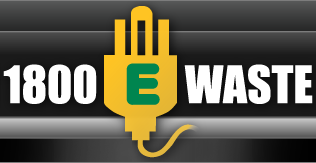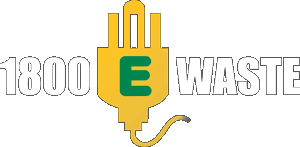By the end of 2013 the government will switch off the analogue signal all over Australia… aside from the obvious question of ‘can I still watch TV and listen to my radio?’, we need to ask, what happens to all of the obsolete televisions and radios?
Unfortunately at this stage the answer will be more than likely…. landfill. Each year 1.5 million televisions are disposed in landfill in Australia1 and with the switch to digital this disposal rate is estimated to rise sharply. Lead and mercury are just two of the many toxic components of a television set that can have extremely dangerous effects on humans and environments when left in landfill to leach into the ground.
Disposing of electronic waste in landfill is not only hazardous to the surrounding environment but an enormous waste of valuable materials and resources. If 75% of the 1.5 million televisions that are discarded annually were recycled, this would amount to a national saving of approximately 23,000 tonnes of CO2 equivalents, 520 mega litres of water, 400,000 gigajoules of energy and 160,000 cubic metres of landfill space.1
Unfortunately Australia is dragging the chain on recycling ewaste.
Australia is fast falling behind in dealing with our ewaste effectively. In other parts of the world, such as the European Union and Japan, ewaste recycling laws are very strict; the focus is on the ‘three Rs’ – reduction, reuse and recycling. This approach is not only law but also part of the mindset, a stark contrast to Australia where endless discussion seems to end in very little action.
However, the inaction is not from lack of trying, Product Stewardship Australia (PSA), a not-for-profit industry led organisation, have been trying to implement a national ewaste take-back / recycling scheme for years. Industry members include Toshiba, Dick Smith Electronics, Philips, Panasonic and Samsung. Executive Officer John Gertsakis says “Industry associations such as ours, the recycling industry, local governments and consumers are all ready and hungry to do this but the key policymakers are going very slowly. There is no clarity of vision from the Australian Government about what it wants to do about ewaste.”
Don’t let your television be a part of the toxic ewaste stream flowing into our landfills.
The good news is there are two ways to prevent your analogue television ending up in landfill. The first is getting a digital set-top box, if your television is still in working order the set-top box will convert the signal and your television will continue to function as normal. On the other hand if you’re looking to update to a digital television and you no longer want your old set you can have it recycled, not only ensuring that its toxic components don’t end up in landfill but also extending the lifespan of the valuable materials used to make it.
1800Ewaste will come to you, load your old television(s) onto their truck and deliver them to the appropriate recycling facility where 95-98%, by weight, will be recycled for future use. Our service is fast, professional and reliable. Please call us today to find out more and arrange a pick up.
1800EWASTE, 1800 392 783
1. Environment Protection and Heritage Council, Statement on End of Life Televisions, Nov 2008

